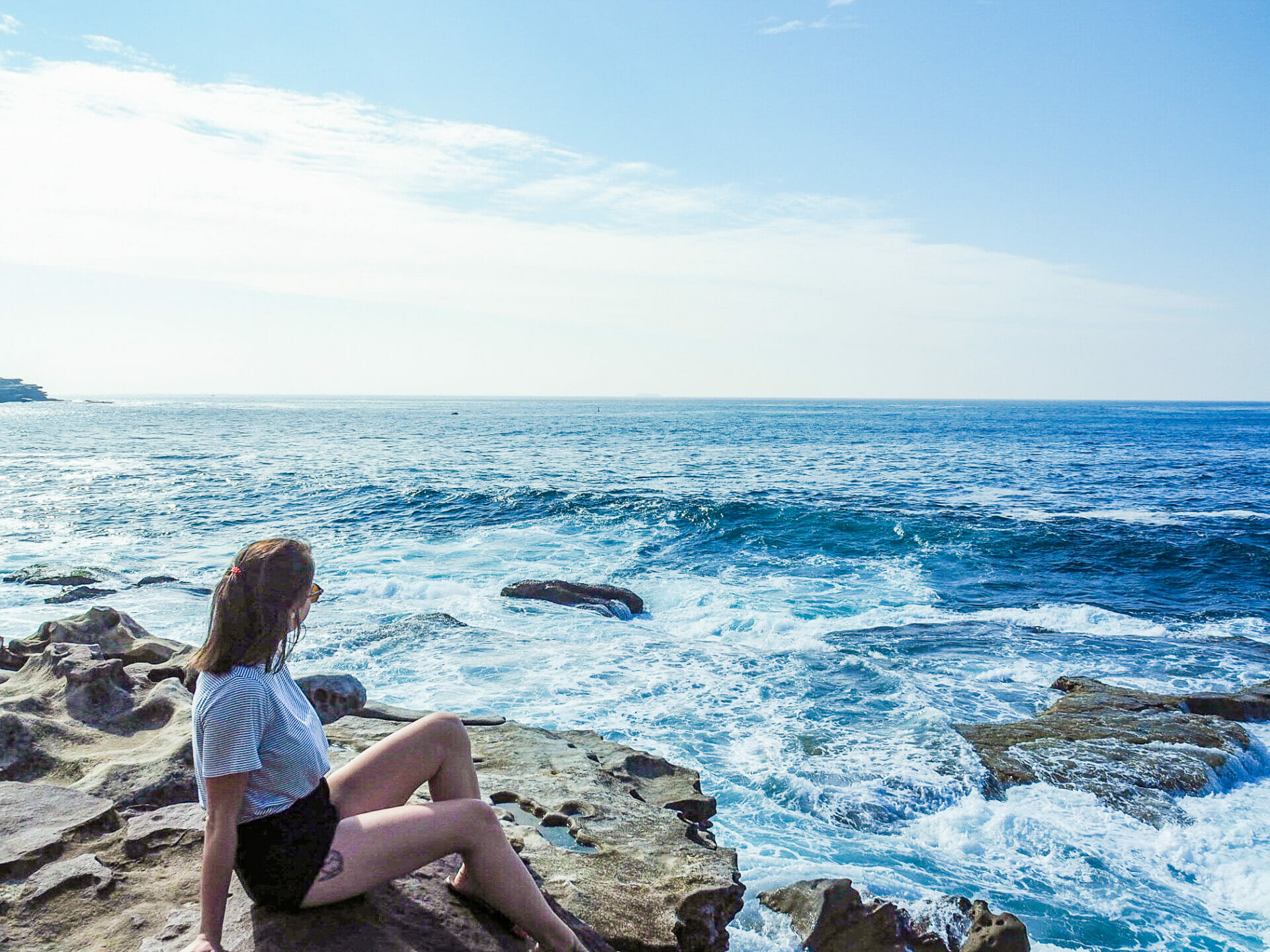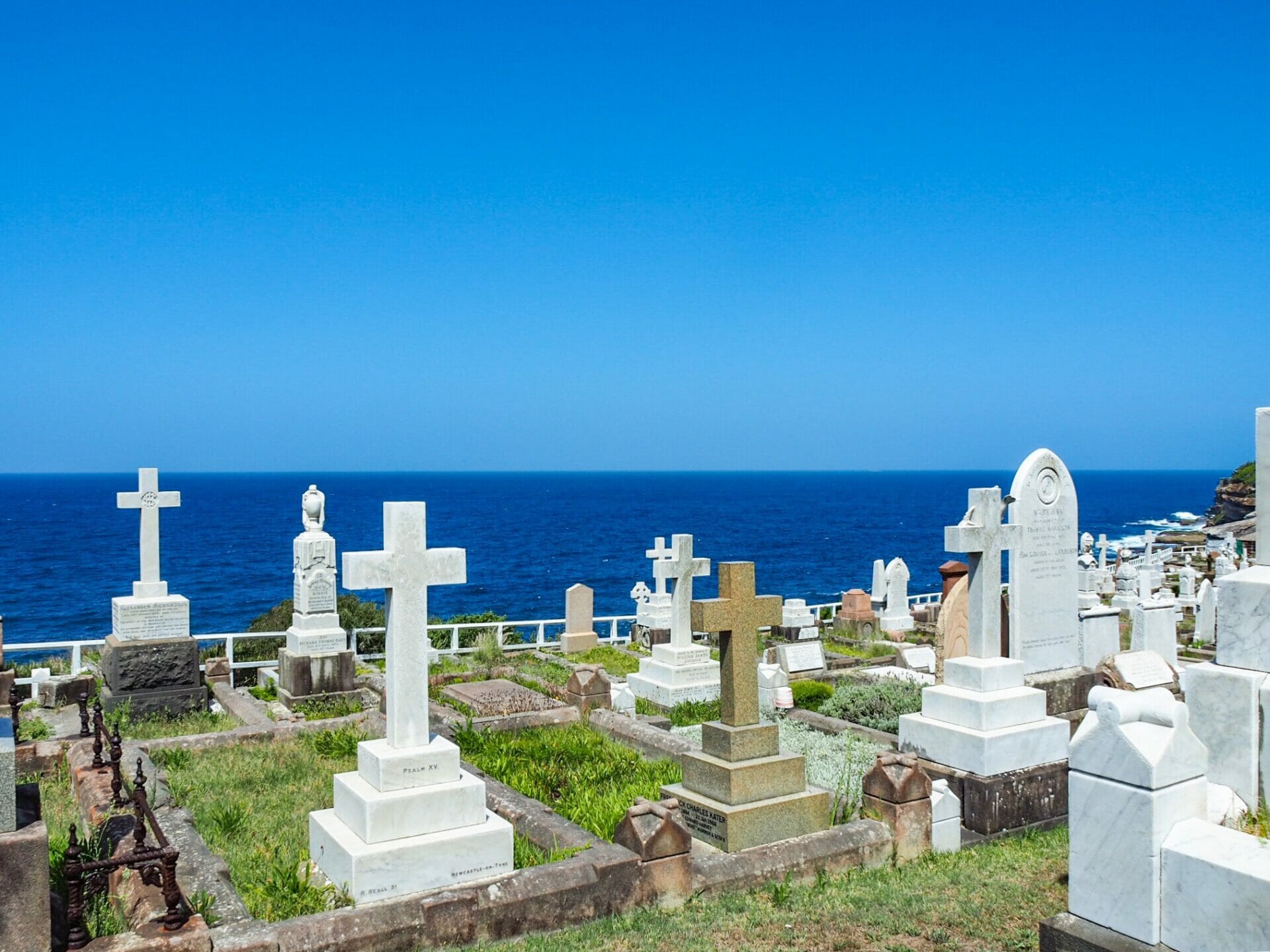
Last Updated on 4 February 2022
Taking in Bondi, Tamarama, Bronte, Clovelly & Coogee Beach, the Bondi to Coogee coastal walk is the absolute best way to explore some of Sydney’s most popular beaches. Although you certainly won’t be the only one out for an afternoon walk along this path and you may have to fight for towel space on the bustling foreshore, the coastal scenery, hip cafes, sparkling rock pools, and long stretches of sand are more than enough to make up for all the people.
On two different weekends this month (because it was that good), I journeyed up to Sydney’s glitzy eastern suburbs for an afternoon stroll and splash that made me seriously re-evaluate my opinion of these tourist hotspots (and also seriously consider relocating).



All the details: Bondi to Coogee Coastal Walk
Getting there
Take the train to Bondi Junction and then either catch the 380 bus to Campbell Parade or walk about 20 minutes to reach Bondi Icebergs Club.
Starting point
Walking down the ramps at Bondi Icebergs, there’s a path leading out to the right (as you look at the ocean) which is the start of the walk.
Ending point
Coogee Beach.
Total distance
7.8km, including the walk from the Bondi Junction Station.
Walking time
About 1.5hrs, not including all the swim stops.
Difficulty
Easy— this is an incredibly flat, paved coastal path with only a few steps or inclines.
Accessibility
The walk passes through a number of bustling suburbs, constant cell reception, many people around.
Food & water
There are shops by all of the 5 beaches on this walk, as they are all busy Sydney suburbs. There are also some exceptionally nice cafes in Bondi, Bronte & Coogee for breakfast/lunch.
Variations
This path is often walked as Bondi to Bronte or Bronte to Coogee, but it would be possible to stop and start at any of the 5 beaches.
My rating
8/10 for the absolutely stunning scenery and beautiful beaches, but also for the somewhat irritating number of walkers on the well-known path.

Bondi Junction
From the train station, walk east down Waverley Street and then continue along Bondi Road until it curves left and becomes Campbell Parade. Follow this main drag down along all the beachfront cafes and shops, maybe popping in for a gourmet bite (I can recommend Preach cafe for a healthy and delicious brekky/lunch).




The walk may only be about 20 minutes from the station, but there’s enough to see along the way that you’ll need to make an effort not to just write off the walk and spend all your time (and money) in one of the cute little shops. Another day, for sure!
Bondi Icebergs Club
From Campbell Parade, cross the road onto Notts Avenue where you’ll see the iconic Bondi Icebergs Club and its beautiful outdoor pools set right on the ocean.
The club’s somewhat crazy members (“Icebergs”) swim throughout the chilly Sydney winter in these stunning pools, but it’s possible to take a dip at any time even as a non-member for just $7 (although preferably not in winter).






The club is also home to a really nice bistro serving up classic pub fare and seafood favourites, plus an expensive but inventive bar overlooking the water, so take a little time here before setting out on the walk.
The food and drink might be pricey, but the view is unbeatable, making it well worth the extra cash. After sufficient indulgence, the walk begins on a well-marked and obvious path to the right of the club.

Bondi Beach
Before setting out on this walk, it had been nearly 6 years since I visited Australia’s most well-known beach, purely because I had been put off by the number of tourists (considering there are better beaches in this country without a single other person), but this walk forced me to really reconsider my distain for Bondi.






I’m not ready to agree with those who call it our best beach (Hyams Beach, anyone?!), but I will admit that it’s a gorgeous city beach worth the excursion! The abundant boutiques and trendy cafés on the shore don’t hurt, and if you’re athletically inclined, it’s a pretty iconic surf spot (check conditions here).
Tamarama Beach
Continuing along the beach path and rounding the corner until Bondi Beach disappears behind, you’ll pass some truly incredible homes that will make you wonder what on earth you’re doing with your life.
The path itself is simply gorgeous as well, meandering gently past the sparkling ocean and a number of jagged rocks before reaching MacKenzies Bay.






From here, it’s only a few more minutes to Tamarama Beach, an expansive stretch of sand (albeit with a narrow seafront) set below the vintage-looking Surf Life Saving Club. Despite a sign that the water conditions are dangerous, there are heaps of people cooling off in the water as we pass, but we decide to continue onwards towards some calmer swimming.

Bronte Beach
Walking across Tamarama Beach and back up onto the path above, it’s only about 15 minutes at a rather leisurely pace (including quite a bit of photo snapping) to reach Bronte Beach, a much longer stretch of sand with enormous and very inviting rock pools at its south end.
This is an excellent stop for nibbles or even a cool drink at one of the many beachfront cafés, anything to spend some time in front of this view.








From the Bronte rock pools, the coastal path continues along the Waverley Boardwalk, which wraps along the coastline in front of the overflowing Waverley Cemetery. I’m not one for graveyards personally, but it is an interesting spectacle to see ancient, Victorian-style headstones set against the brilliantly blue Pacific.

Clovelly Beach
After parading by all the ageing tombstones and family crypts in the Waverley Cemetery, you finally emerge into Clovelly, a sparkling suburb with beautiful homes and an even more beautiful waterfront.
The beach itself is rather small and set a ways back, at the end of a narrow inlet. The surf breaks at the mouth of the inlet, so there are only gentle waves making their way across the water towards the beach, making this an absolutely phenomenal place for a relaxing dip.






Either side of the inlet has been walled by concrete, and while concrete isn’t my favourite place to lay out on a towel, it’s amazing to jump right into the surprisingly refreshing water (thankfully there is also really consistent movement of the water, so it’s not stagnant or gross).
Clovelly Beach is actually known for its aquatic life, enormous Blue Gropers in particular, and the highly varied depth (from knee height to 5+ metre) makes it a great place to spend the afternoon snorkelling, as well. Of all the lovely beaches on this walk, Clovelly is by far my favourite, and I am already making plans to return with my snorkel for an afternoon of underwater exploration!

Coogee Beach
Sadly leaving the amazing Clovelly behind, the walk continues up onto the road and across a carpark to meet back up with the coastal path. The next inlet is Gordon’s Bay, a very calm swimming/ paddleboarding spot with an admittedly small beach, but whose beauty more than makes up for the limitations in sand.
After descending to the Bay and then climbing back up on the opposite side, the path files around a headland and finally the beautiful Coogee Beach comes into sight.






In no shortage of weekend sunbathers and surfers, the beach is usually pumping, as are the surrounding cafés and the popular Coogee Pavillion. Grab a bite to wrap up the walk, but make sure to also grab a spot on the beach— there really is no better way to finish the epic Bondi to Coogee Walk than by just jumping straight in the water and getting a final dose of vitamin sea.

Overall impressions: Bondi to Coogee Coastal Walk
As one of Sydney’s most popular coastal walks, there are always a number of other people strolling between Bondi, Bronte, and Coogee, so don’t expect seclusion or hidden gems along the way.
But, although I absolutely hate battling crowds, this walk is just too stunning to miss and therefore worth the small amount of jostling that takes place on the path. Plus, it’s an excellent way to see some of Sydney’s loveliest beaches in a single day, sample a bit of swimming at each, and enjoy a gourmet lunch at one of the many waterfront eateries.
I’d highly recommend setting aside an entire day to really make the most of all the scenic stops and inviting beaches along the way, as well as bringing a snorkel to scout for Blue Gropers at Clovelly Beach. All in all, this is a fabulous walk, and one that I’ll likely repeat again and again.
Love this walk? Check out more Sydney adventures!
SPIT BRIDGE TO MANLY: STROLLING THROUGH SYDNEY’S NORTHERN BEACHES
AN AFTERNOON STROLL FROM ROSE BAY TO WATSONS BAY
BEST OF THE BLUE MOUNTAINS: PRINCE HENRY CLIFF WALK



The Comments
website design
We’re a gaggle of volunteers and startting a new scheme in our community.
Your website provided us with useful information to work on.
You have done a formidable job and our entire grouup will be thankful to you.